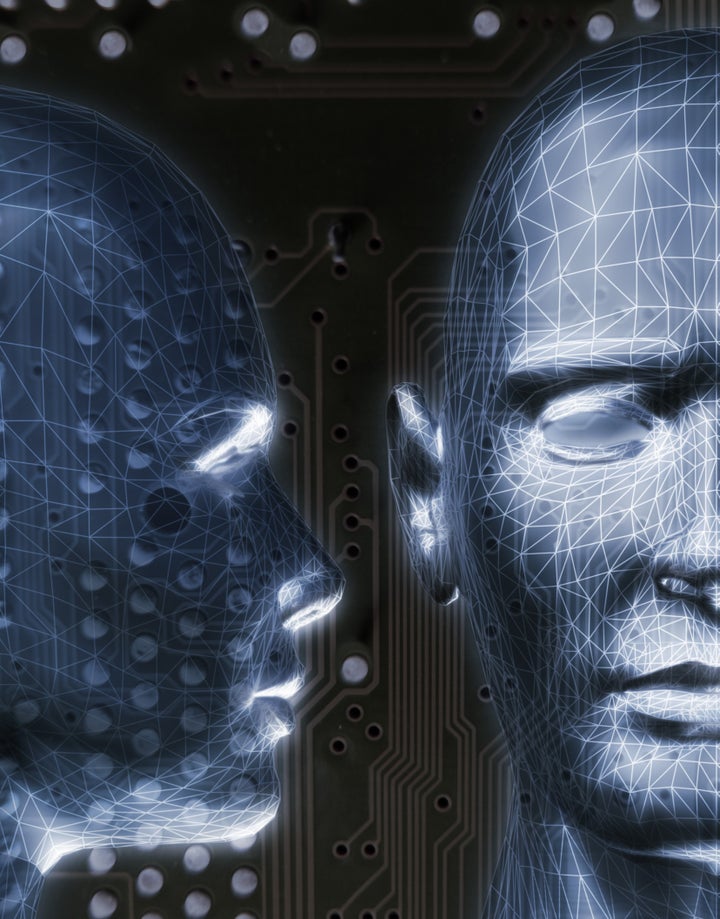
Where does that tiny voice in your head come from that knows right from wrong?
Moral judgments can be difficult. Consider two possible scenarios, which might make a tense scene in a murder mystery: Grace and Sally are taking a tour of a chemical plant. Grace walks over to the coffee machine to pour some coffee. Sally asks for some too, with sugar.
In the first scenario, the white powder next to the coffee machine is a deadly poison chemical left behind by a scientist, but the container is clearly marked "toxic." Grace believes the white powder is a toxic substance. She put the substance into Sally's coffee. Sally drinks it and dies.
In the second scenario, the white powder is ordinary sugar. The container is clearly labeled "sugar" and Grace believes that it is sugar. She puts the substance into Sally's coffee. Sally drinks the coffee and she is fine.
Pretty simple--the first scenario is morally wrong, the second is not.
Now, what if the labels on the sugar container were wrong? That is, Grace believed the substance in the container labeled "sugar" was indeed sugar, but in fact it contained poison; or the container labeled "toxic" really contained ordinary sugar?
This plot twist generates four possible outcomes to the dramatic scene. In each one, Grace can act in a way that is consistent with her belief of what the jar contains to either (A) intentionally poison Sally or (B) to simply give her sugar, or, again acting consistent with what she believes is in the jar, Grace will either (C) cause Sally accidental harm by giving Sally poison when she believed the container held sugar, or (D) fail in her attempt to murder Sally by giving her what she believed to be poison, when in fact the mislabeled jar contained sugar. No matter how the scene plays out, the morality of Grace's actions cannot be determined simply by observing the outcome of her action (whether or not Sally dies); the essential information in making the proper moral judgment hinges on what Grace believed in her heart was in the container.
How does the human brain make moral judgments that require assessing what the perpetrator believes? Children, whose brains are still developing, do not have adult moral judgment capabilities, and they will typically judge the "wrongness" of an action simply by the outcome of events, not by the intention of the actor. In the scenario above, a child would commonly conclude that if Sally died, the action that led to it was wrong, when in fact, whether the behavior is morally permissible or morally forbidden depends on what the actor believed was in the container. Children are poor at judging another person's beliefs. When you think about it, this is a pretty sophisticated, but essential skill. Where in the brain does this neural circuitry for making such moral judgments reside? Could it be that these circuits are not connected properly in some adult brains?
A study by Michael Miller and colleagues reported in the June issue of Neuropsychologia claims to have found the brain circuit that is essential for making such moral judgments. Their experiments show that this type of moral reasoning depends on the exchange of information between specific regions of the left and right brain.
It is well known that we all have, in fact, two brains inside our skulls connected by a huge bundle of nerve fibers called the corpus callosum. Certain abilities are controlled predominately by either the left or right cerebral hemisphere. Speech, for example is controlled by the left hemisphere in most people. Neuroimaging studies have shown that the sophisticated process of ascribing beliefs and intentions to other people is performed by a spot in the right brain called the right temporal parietal junction. In studying responses of patients in which the corpus callosum connecting the left and right brain had been severed, the researchers found that information about beliefs and intentions from the right brain had to reach the judgmental processes in the left brain to reach the correct moral judgment. With these connections missing, the split-brain patients differed from normal adults in reasoning the morality of an action simply on the basis of the outcome. Just like children, split-brain patients condemned Grace even if she put the poison in Sally's coffee unwittingly, and they did not fault her if Grace's attempt to poison Sally was foiled by incorrect labels on the sugar jar.
These patients were also unable to detect common social faux pas that would embarrass most adults. For example, they could not identify any error in a person telling someone that a gift they had received was hideous, regardless of whether the perpetrator remembered or forgot that the person the actor was speaking to had been the one who had given them the gift.
The study shows that while some brain functions are localized to either the left or right brain, when it comes to moral judgments, reaching the right conclusion requires putting your two brains together.
See: Miller, M.B., et al., (2010) Abnormal moral reasoning in complete and partial colostomy patients. Neuropsychologia 48, 2215-2220.